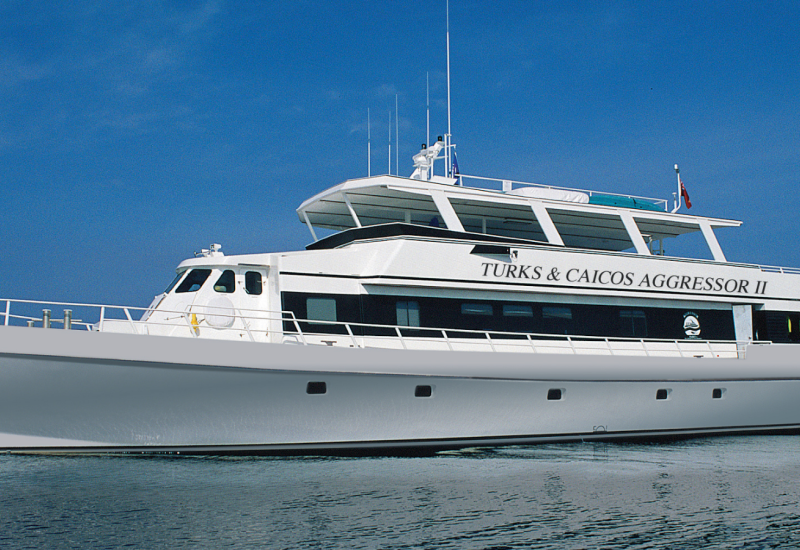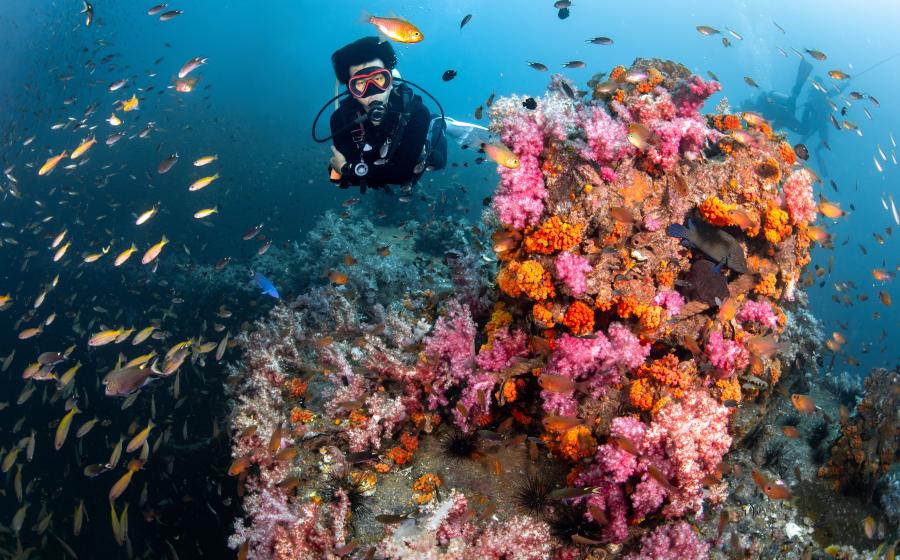Tips for Taking Your First Scuba Liveaboard Trip
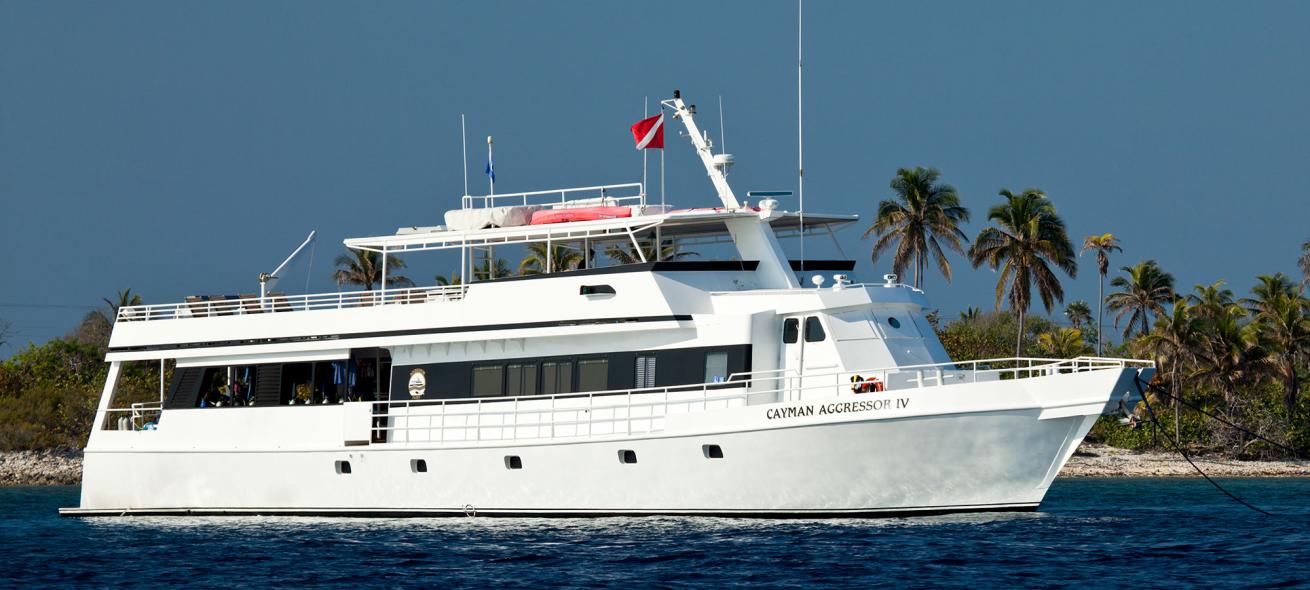
Aggressor FleetLiveaboards can help you maximize your dive vacation time, budget and experience.
You love scuba diving and you’ve heard that a liveaboard dive vacation is one of the best ways to maximize your time in the water — and your hard-earned vacation dollars. Here’s what you need to know to ensure your first liveaboard trip goes off without a hitch.
ARE YOU READY?
It’s difficult to answer this question with a single response for every diver. The amount of experience you need varies by destination, type of diving and conditions, but a good rule of thumb is to have a minimum of 50 dives under your weight belt before making your first liveaboard trip. You wouldn't go snow skiing on black-diamond terrain if you've only just mastered doing a snowplow, so don't sign up for open-ocean diving if you're still getting the hang of neutral buoyancy.
If the destination features cold water or ice diving, current, caves, shipwrecks or any other challenging environment, be sure you have the proper training for it. If you're hoping to get certified in advanced or technical diving, make arrangements before your trip.
The truth is diving maturity varies by individual, and many factors come into play. Have you taken an advanced diving course? Is your experience recent? Have you dived in similar conditions before? Are you a self-reliant diver or a princess diver?
Even the most experienced divers face new challenges when diving from a liveaboard, but as Wayne Brown, CEO of Aggressor Fleet, says: “When the charter is over, you will have had so many back-to-back dives every day that your confidence level will be higher than you ever imagined!”
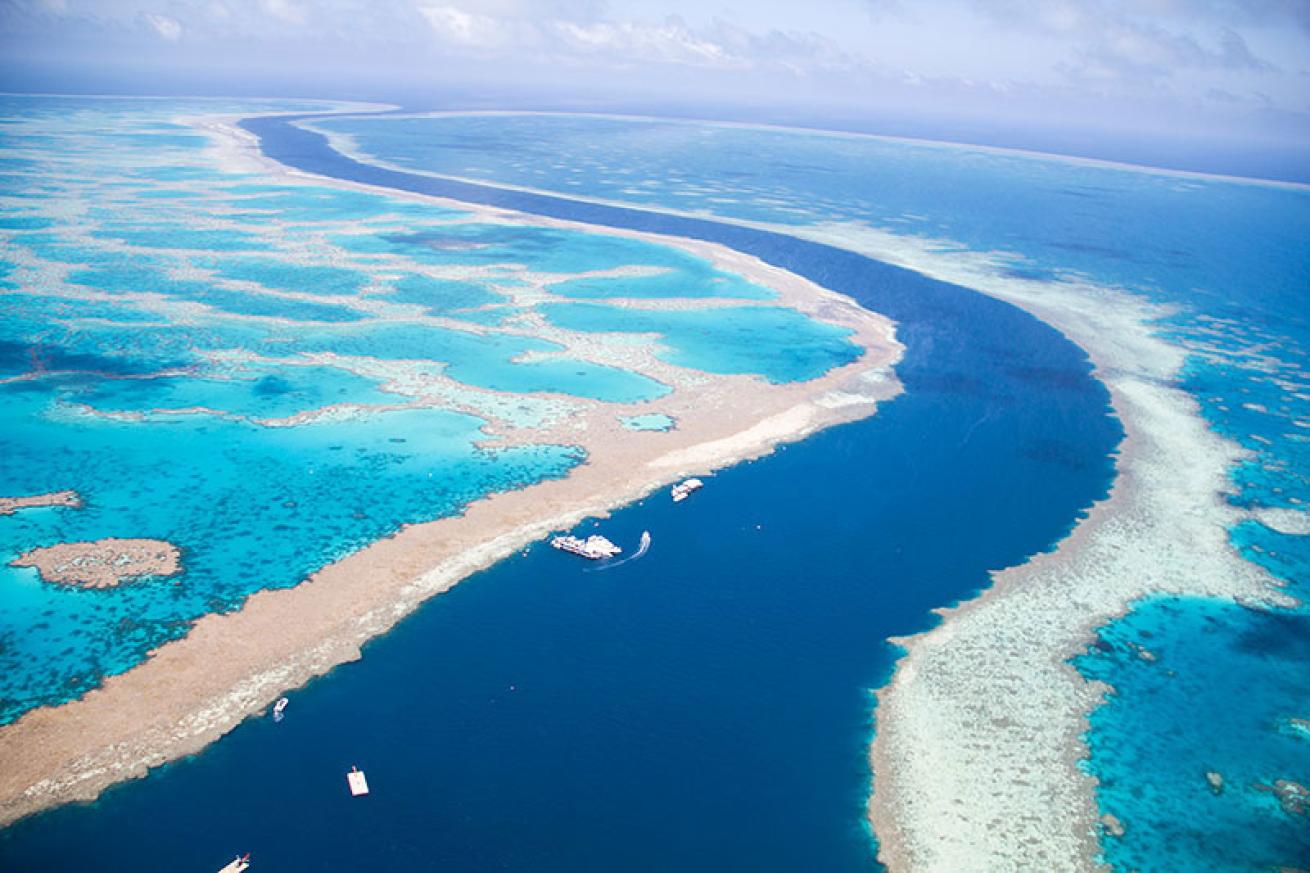
iStockA liveaboard dive vacation can be a great way to visit destinations you’ve always dreamed about, like Australia’s world-famous Great Barrier Reef.
HOW TO CHOOSE THE DESTINATION
A liveaboard can put you in some of the best places in the world to dive. Start by creating a bucket list. For example, if you’re hoping to see a specific animal, like manta rays, research locales where they’re known to frequent.
Do you prefer warm-water diving? Be sure to check the location's water temp for the season you’re going. Keep in mind that some well-known dive destinations are vacation-lovers’ paradises, but their temperate ocean waters are not tropical.
Do you want to add on a topside vacation? Not all dive destinations or liveaboard companies offer these — make sure you ask and plan ahead.
What if weather or conditions force a change in itinerary? It can be disappointing, to say the least, when the crew announces a change in plans. In addition to your gear, clothing and personal items, it will help if you pack a good attitude.
The understanding of the guests is always appreciated as the captain makes sure safety comes first,” says Brown.
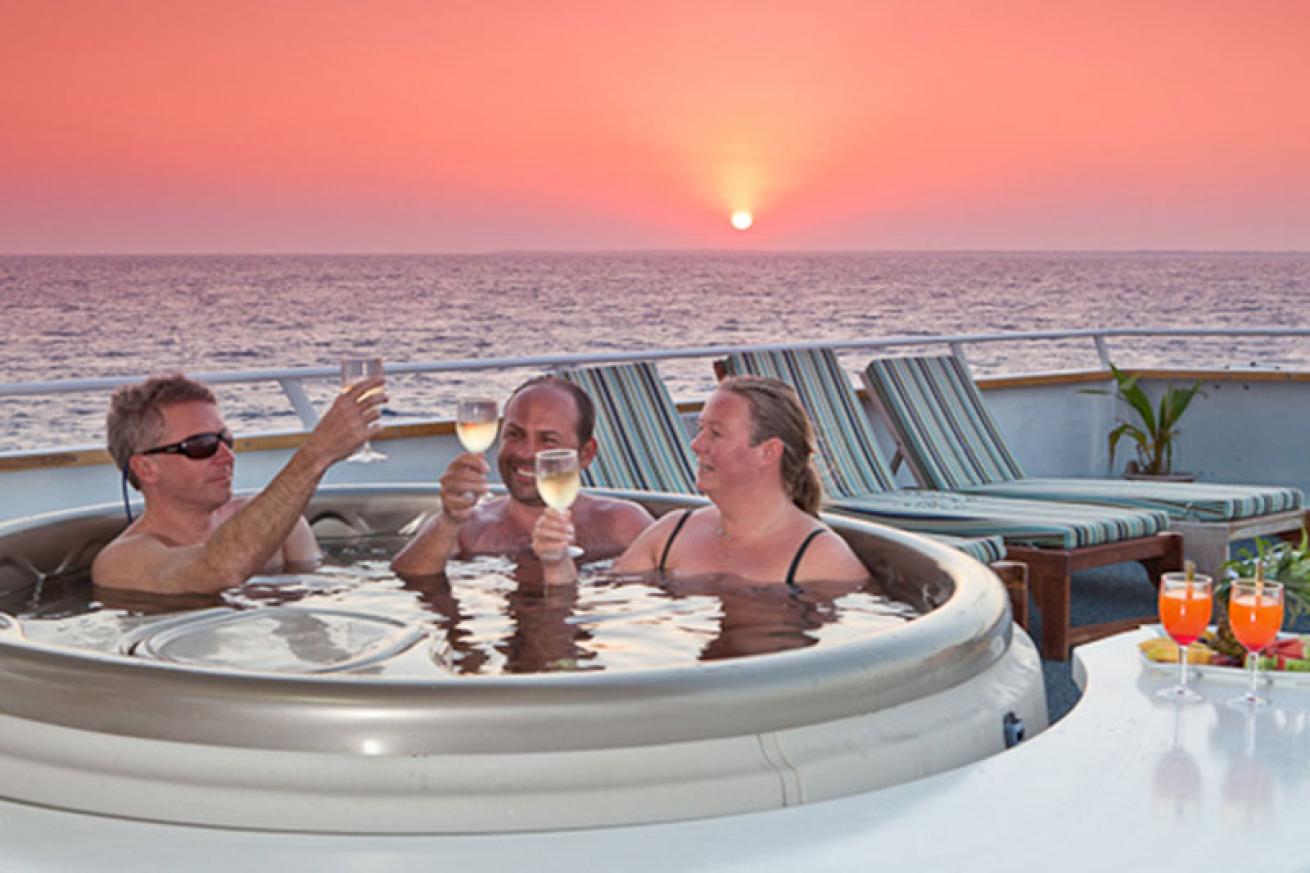
Aggressor FleetIf you’ll be spending most of your time diving and relaxing and going to a tropical destination, you won’t need to pack more than your swim suit and lightweight clothing.
WHAT SHOULD YOU PACK?
The biggest mistake first-timers make is overpacking,” says Brown. “We tell first-timers to pack what you think you need, and then put half of it back. You will still find you packed too much.”
Of course, you’ll need your scuba gear. It helps to make a checklist, both for gear maintenance and packing. Make sure your reg has been serviced according to the manufacturer’s specifications. Check batteries on your dive computer, dive lights and camera. Pack a backup mask and some extra fin straps. If you don’t want to lug all your gear, or you don’t have a complete kit, ask ahead about rental gear.
Pack comfortable clothing to wear when you’re not diving. The clothes will depend on the weather, but if you’re going someplace warm, a swimsuit, shorts and T-shirts may be all you need on the boat. If it’s a cooler time of year or you tend to get chilled, pack a versatile jacket — one that’s both water- and wind-proof. If you’re spending time on shore — for example, many liveaboards ask that you eat your final dinner at a local restaurant once you’re back in port, so that the crew has a chance to prepare the boat for the next week’s guests — pack a nice set of shorts, shirt or sundress.
Pack any toiletries that you might need, especially sunscreen, and prescription medications. You may want to consider packing over-the-counter medicines, such as motion sickness tablets and pain killers.
Keep in mind that space in your berth may be tight, and the vessel will most likely only be able to accommodate storing your gear. For more on what to bring on your trip, read What to Pack for Your Liveaboard Dive Trip.
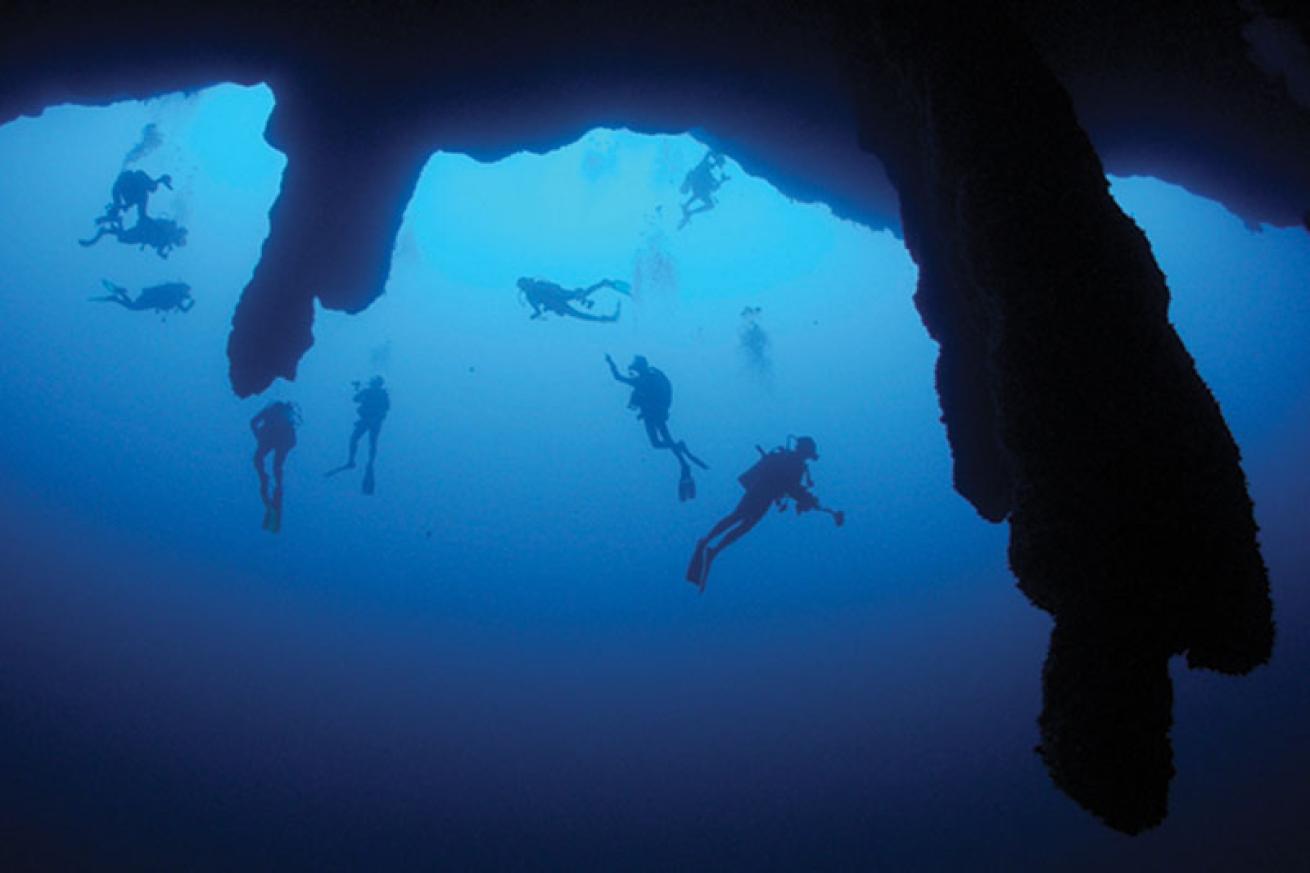
Aggressor FleetEven if you’re traveling solo, you’ll make new friends and dive buddies. The liveaboard crew will keep your safety paramount.
DO YOU HAVE A BUDDY?
If not, the liveaboard company will often have you bunk with another solo diver, who might make the perfect dive buddy. The crew should also provide a divemaster in the water or have a buddy-diving system. Just like a day-trip boat-dive briefing, make sure you follow all safety procedures for exiting and boarding the boat.
The crew will want you to be honest about your air consumption and experience and the type of profile you prefer, so the cruise director can pair you with a diver of similar diving desires and skill levels.
If after a couple of dives you find you’re not compatible with your buddy — hey, it happens — speak privately with the cruise director, who can help pair you with someone else.
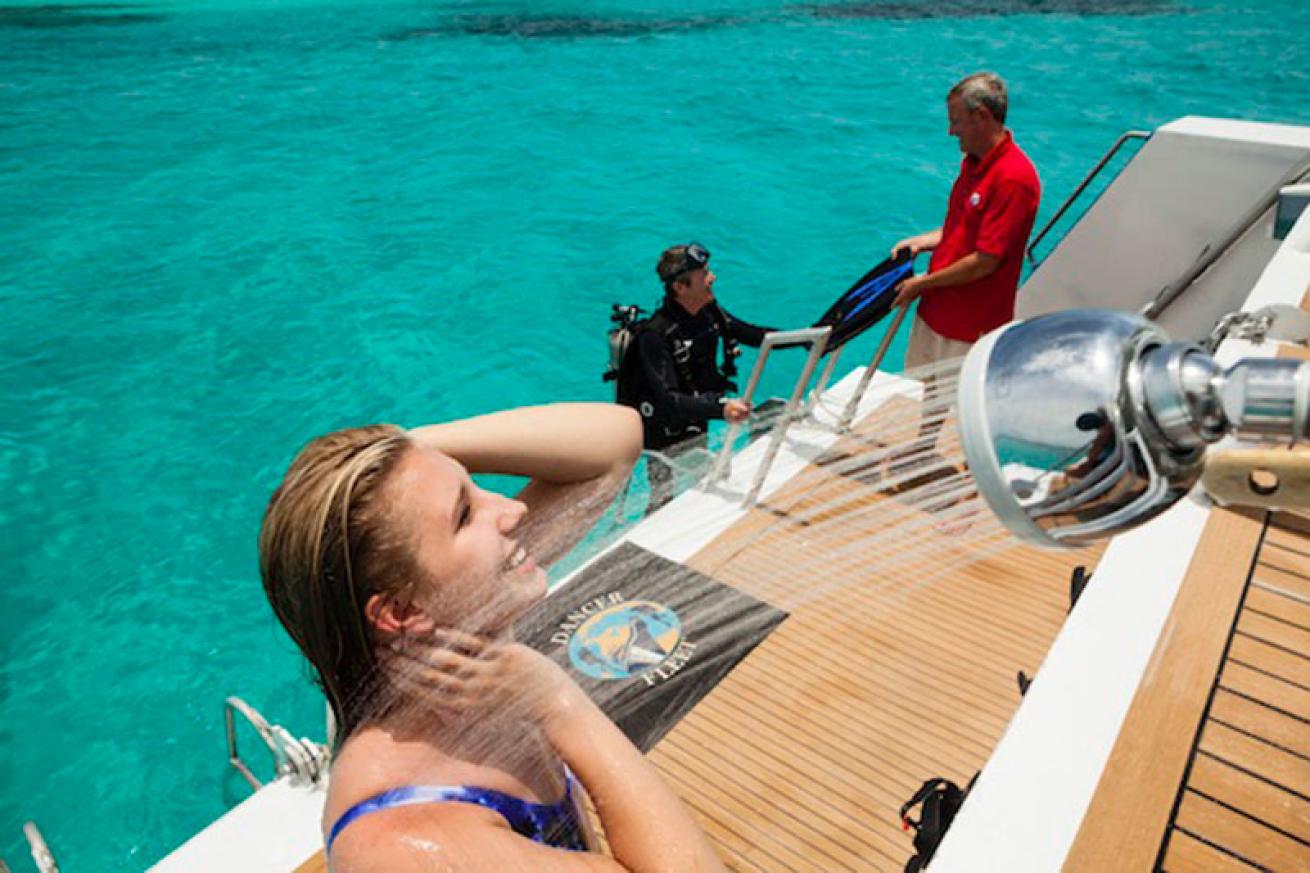
Aggressor FleetThe diving is easy when the liveaboard’s dive deck is equipped with a hot-water shower, ample gear-storage space, camera table, a comfortable swim platform — and an attentive crew.
WHAT ARE THE ACCOMMODATIONS LIKE?
Look for vessels that meet your needs. If it’s really important for you to have a private cabin with en-suite bathroom, for example, you’re not going to be happy in a quad-occupancy bunkbed berth, no matter how many manta rays you see.
Budget and the vessel will determine the size of your berth. Some budget liveaboards offer no-frills bunk beds with shared bathrooms or dorm-style accommodations with many roommates.
Most mid-range liveaboards offer single- and double-occupancy cabins with air-conditioning and en-suite facilities.
Luxury liveaboards provide amenities like king-size beds, private balconies and morning coffee service.
The websites of most liveaboard companies offer boat layouts and specs. You can easily see the size and location of the berths, as well as check for salon and sundeck space.
When booking, confirm the number of guests and whether you will be sharing a berth and/or bathroom with other divers.
WHAT EXTRA EXPENSES SHOULD YOU EXPECT?
You’ll need to budget for a number of travel expenses. For example, do you need to spend a night in a hotel or other accommodation before boarding or after disembarking? Ditto for meals.
If you’re making excursions and day trips, check ahead to see whether there are additional costs for these itineraries. Keep in mind that local guides may rely on tips.
Also consider an unexpected emergency. Extra cash in both U.S. and foreign currencies will come in handy should an unexpected situation arise.
Finally, it’s customary to tip the crew at least 10 percent of the liveaboard’s cost. You can adjust upward, depending on the level of service you received. For example, if they rinse and dry all your gear after every dive, consider tipping more.


